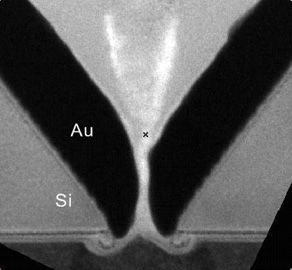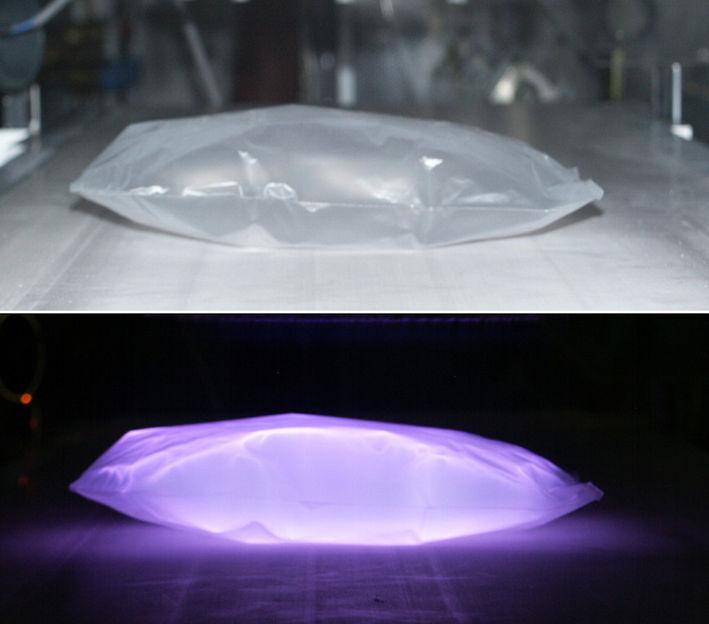Columbia researchers report novel approach for single molecule electronic DNA sequencing
Columbia researchers have developed a novel approach to potentially sequence DNA in nanopores electronically at single molecule level with single-base resolution
DNA sequencing is the driving force behind key discoveries in medicine and biology. For instance, the complete sequence of an individual's genome provides important markers and guidelines for medical diagnostics and healthcare. Up to now, the major roadblock has been the cost and speed of obtaining highly accurate DNA sequences.
While numerous advances have been made in the last 10 years, most current high-throughput sequencing instruments depend on optical techniques for the detection of the four building blocks of DNA: A, C, G and T. To further advance the measurement capability, electronic DNA sequencing of an ensemble of DNA templates has also been developed. Recently, it has been shown that DNA can be threaded through protein nanoscale pores under an applied electric current to produce electronic signals at single molecule level. However, because the four nucleotides are very similar in their chemical structures, they cannot easily be distinguished using this technique. Thus, the research and development of a single-molecule electronic DNA sequencing platform is the most active area of investigation and has the potential to produce a hand-held DNA sequencer capable of deciphering the genome for personalized medicine and basic biomedical research.
A team of researchers at Columbia University, headed by Dr. Jingyue Ju (the Samuel Ruben-Peter G. Viele Professor of Engineering, Professor of Chemical Engineering and Pharmacology, Director of the Center for Genome Technology and Biomolecular Engineering), with colleagues at the National Institute of Standards and Technology (NIST) led by Dr. John Kasianowicz (Fellow of the American Physical Society), have developed a novel approach to potentially sequence DNA in nanopores electronically at single molecule level with single-base resolution. This work, entitled "PEG-Labeled Nucleotides and Nanopore Detection for Single Molecule DNA Sequencing by Synthesis" is publishedin Scientific Reports.
The reported nanopore-based sequencing by synthesis (Nano-SBS) strategy can accurately distinguish four DNA bases by detecting 4 different sized tags released from 5'-phosphate-modified nucleotides at the single molecule level for sequence determination. The basic principle of the Nano-SBS strategy is described as follows. As each nucleotide analog is incorporated into the growing DNA strand during the polymerase reaction, its tag is released by phosphodiester bond formation. The tags will enter a nanopore in the order of their release, producing unique ionic current blockade signatures due to their distinct chemical structures, thereby determining DNA sequence electronically at single molecule level with single base resolution. As proof-of-principle, the research team attached four different length polymer tags to the terminal phosphate of 2'-deoxyguanosine-5'-tetraphosphate (a modified DNA building block) and demonstrated efficient incorporation of the nucleotide analogs during the polymerase reaction, as well as better than baseline discrimination among the four tags at single molecule level based on their nanopore ionic current blockade signatures. This approach coupled with polymerase attached to the nanopores in an array format should yield a single-molecule electronic Nano-SBS platform.
Original publication
Other news from the department science

Get the life science industry in your inbox
By submitting this form you agree that LUMITOS AG will send you the newsletter(s) selected above by email. Your data will not be passed on to third parties. Your data will be stored and processed in accordance with our data protection regulations. LUMITOS may contact you by email for the purpose of advertising or market and opinion surveys. You can revoke your consent at any time without giving reasons to LUMITOS AG, Ernst-Augustin-Str. 2, 12489 Berlin, Germany or by e-mail at revoke@lumitos.com with effect for the future. In addition, each email contains a link to unsubscribe from the corresponding newsletter.






















































